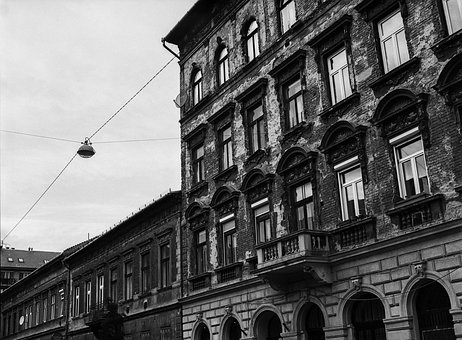Removing Water Marks From Glass by:Jon Miller (TOGWT)

Removing Water (Spots) Marks
Removing Water (Spots) MarksDetailer's may occasionally come across vehicles which exhibit what appears to be one of the following conditions: Water Spots, Etching or a "rough to the touch" feel.
Water doesn't leave marks or etch glass; it's the minerals that it contains calcium (Ca) and magnesium (Mg) the spots are actually traces of minerals in the pores of the glass. They need to be dissolved into a liquid and then rinsed off. Alternatively they can be caused by industrial pollution (i.e. acid rain, bird excrement or industrial fallout)

There are two categories of 'water spots'-
1) Stage One Corrosion
[: defined as a surface with light to moderate corrosion damage to the paint surface]
(Stage One Corrosion) alkaline watermarks consist of calcium (Ca) and magnesium (Mg) both of which are basic (alkaline pH 10) that alight on the surface; ultra violet (heat) radiation (UVR) will leave a white 'water mark', the minute crystals bond to the surface, they will not wash off as they are insoluble and if left for any length of time they will etch the paint film surface leaving a concave circular mark, remove surface deposits with detailer's clay and an acetic acid pH 2.0 (vinegar) to naturalise the alkaline
2) Stage Two Corrosion
[: definition when the dirt/corrosion deposits are no longer on the surface but have started to break down the molecular structure, leaving an etched or white haze on the surface after the stain has been removed, with moderate to serious paint damage]
Below surface (etched) acidic watermarks - are caused by an aggressive alkaline or an acidic solution (acid rain, bird excrement or industrial fallout) causing a chemical reaction, if left for any length of time they will etch the paint film surface leaving a concave circular mark. Unlike water spots which typically have a white outline of the spot, acid rain etching is smaller and you can see the damage in the clear coat.
Etched acid rain spots are one of the most difficult paint defects to remove so be patient as it will probably take more than one attempt to remove them. Acid spots require an abrasive polish to level the surface (some stubborn marks may require wet sanding) and an alkaline solution to neutralize them, simply rinsing a vehicle with deionised water or tap water activates / reactivates the acid concentrates.
If the paint can be rectified by chemical means then this is the answer; not abrasive polishing. Using the correct chemical cleaners will dissolve the contaminants rather than abrading the paint. With all cleaning products (especially solvents) always test a small inconspicuous area first to ensure it won't discolour, stain or etch the surface, and ensure that the pH of the product is suitable for the material
After the paint surface has been subjected to a chemical cleaning its protective layer (s) have been removed and the paint surface left without protection, so it is very important that a polymer and / or Carnauba wax protection be applied immediately
Use the least abrasive product first-
1.Use a paint surface cleaner (Z-PC Fusion Dual Action Paint Cleaner)
2.Try to dissolve the alkaline-based, surface/etched mineral water deposits try one or more of the following;
a)Use a 2:1 or stronger solution of distilled water/distilled white vinegar (Acetic acid)
b)Try a 2:1 solution of distilled water/Isopropyl Alcohol (adjust ratio as required)
c)Or equal parts distilled water/distilled white vinegar/Isopropyl alcohol.
3.Clean the effected surface with Klasse All-In-One or Zaino Z-PC Fusion Dual Action Paint Cleaner
4.Use detailing clay to remove any 'hard' surface granules
5.Use a machine polish (Optimum Polish, Optimum Compound) and a cutting (LC White, Orange or Yellow) foam pad (speed # 4- 5.0) to level the surface
6.For Ceramiclear or other hard clear coats substitute Menzerna for machine polish; Super Intensive Polish / Nano Polish (105FF) or Final Finish Polish (106FA)
7.Use the least aggressive polish/foam pad first, if this doesn't remove the problem step-up to a more aggressive polish / foam pad set-up
8.Wet-sand with 2000, 2500 or 3000 grit finishing paper
1a) Removing surface (Stage One Corrosion) -
Methodology
Use detailing clay to remove any 'hard' surface granules
Use a paint surface cleaner (Z-PC Fusion Dual Action Paint Cleaner)
Dissolve the alkaline-based, surface/etched mineral water deposits try one or more of the following;
a)Use a 2:1 solution of distilled water/distilled white vinegar (Acetic acid pH 2.4)
b)Try 2:1 solution of distilled water/Isopropyl Alcohol (adjust ratio as required)
c)Or equal parts distilled water/distilled white vinegar/Isopropyl alcohol.Allow chemical solution sufficient dwell time (5-10 minutes)
Use a clean spray bottle and 100% cotton Micro fibre cloth to apply the solution to the surface
Or soak a first aid gauze pad with the vinegar/ water solution, this will help it stay in place during the necessary dwell time, 5-10 minutes) wipe off any residue from surface and dry with a damp waffle weave towel
Use a clean spray bottle and 100% cotton micro fibre cloth to apply the solution to the paint surface
Wipe off any residue from the surface and dry with a damp waffle weave towel
If any 'water marks' remain apply distilled white vinegar or Isopropyl alcohol un-diluted to a 100% cotton micro fibre towel, using a medium/heavy pressure on surface, for stubborn spots use an abrasive polish as in 1b)
1b) Removing etched below surface (Stage Two Corrosion)-
Methodology
These can be removed by using detailer's clay to remove any hardened surface deposits
Then using a machine polish ( Optimum Polish, Optimum Compound, Zaino Z-PC Fusion Dual Action Paint Cleaner or Klasse All-In-One ) and a cutting (LC Orange or Yellow) foam pad (speed # 4-5.0 / 1200 RPM ) to level the surface (use the least aggressive polish/foam pad first, if this doesn't remove the problem step-up to a more aggressive set-up)
Work on a very small area at a time (2-foot x 2-foot) until the polish has run out
Repeat this process two or three times, as necessary
Reapply surface protection once spots have been removed.
If none of the above methods remove the etched water spots consider wet-sanding the paint finish
1c) To neutralise acid water spots using a polish or compound will remove the etching and the indentations, the surface should then be neutralised A B C Decontamination / Neutralization system
Notes-
1. Synthetic steel or bronze wool whatever the grade can leave micro-scratches in the glass, which then become impregnated with road dirt, grit and grime, causing a clouding the glass over time, which impairs visibility.
2. Do not use abrasive cleaner; glass polish or any grade synthetic steel wool on after market-tinted glass or you will probably scratch the surface.
3. For deeply etched water spots (> 0.004 Mil) in the windshield surface, do not attempt to polish them out, consult an automotive windshield vendor as glass or plastic used on later model cars is soft and thin (this may vary by manufacturer) due to weight / cost savings by vehicle manufactures and polishing could cause surface to become badly scratched, stressed or cracked.
3. Be cautious with polishes that contain abrasives like aluminium or cerium oxide as they have the potential to damage glass beyond repair.
4. Some windshields and mirrors have a tinted plastic coating or a blue tint that will scratch or be damaged, only use a glass polish (not synthetic steel or bronze wool) on uncoated glass.
Use a clean spray bottle and 100% cotton micro fibre cloth to apply the solution to the paint surface

Wipe off any residue from the surface and dry with a damp waffle weave towel
If any 'water marks' remain apply distilled white vinegar or Isopropyl alcohol un-diluted to a 100% cotton micro fibre towel, using a medium/heavy pressure on surface, for stubborn spots use an abrasive polish as in
About the author
Author of 110 in-depth, unbiased "Technical Detailing Papers" and a 560 page Automotive Detailing, Inside & Out; Knowledge Base for the Perfectionist TOGWT Ltd copyright 2002-2009, all rights reserved.
#
2
CBD exceeded my expectations in every way thanks. I've struggled with insomnia looking for years, and after trying CBD like how long does it take for thc drops to leave your system for the key mores, I finally practised a complete evening of restful sleep. It was like a bias had been lifted off the mark my shoulders. The calming effects were calm despite it profound, allowing me to drift off uncomplicatedly without sensibilities groggy the next morning. I also noticed a reduction in my daytime angst, which was an unexpected but acceptable bonus. The cultivation was a fraction rough, but nothing intolerable. Comprehensive, CBD has been a game-changer for my sleep and solicitude issues, and I'm appreciative to have discovered its benefits.
2024-5-20 02:09
reply
#
3
CBD exceeded my expectations in every way thanks. I've struggled with insomnia for years, and after demanding CBD like cbd topicals in the course of the prime time, I at the last moment trained a loaded eventide of relaxing sleep. It was like a force had been lifted off my shoulders. The calming effects were gentle still intellectual, allowing me to inclination slow uncomplicatedly without feeling confused the next morning. I also noticed a reduction in my daytime angst, which was an unexpected but allowed bonus. The tactfulness was a fraction shameless, but nothing intolerable. Blanket, CBD has been a game-changer for my sleep and solicitude issues, and I'm thankful to keep discovered its benefits.
2024-5-22 23:12
reply
#
4
CBD exceeded my expectations in every way thanks. I've struggled with insomnia in the interest years, and after demanding CBD like pro the from the word go mores, I for ever trained a full evening of restful sleep. It was like a weight had been lifted misled my shoulders. The calming effects were indulgent yet scholarly, allowing me to inclination off logically without sympathies groggy the next morning. I also noticed a reduction in my daytime desire, which was an unexpected but welcome bonus. The cultivation was a bit earthy, but nothing intolerable. Blanket, CBD has been a game-changer in compensation my nap and uneasiness issues, and I'm appreciative to keep discovered its benefits.
2024-5-29 05:54
reply
#
5
https://www.cornbreadhemp.com/pages/how-are-thc-gummies-legal have fit a go-to for me, offering a available, tasty way to satisfaction in CBD’s benefits. I admire how discreet they are, so I can blast off them anytime, anywhere. Themselves, they’ve helped me reduce and improved my drop quality. I also like that each gummy has a synchronize amount of CBD, which makes it cosy to track my intake. As a replacement for anyone interested in irksome CBD, gummies become respecting a smooth starting point. Just a tip: go for a estimable name brand to assure grade and effectiveness!
2024-11-28 17:53
reply
#
6
Zaproxy alias impedit expedita quisquam pariatur exercitationem. Nemo rerum eveniet dolores rem quia dignissimos.
2024-12-4 15:49
reply
#
7
Zaproxy alias impedit expedita quisquam pariatur exercitationem. Nemo rerum eveniet dolores rem quia dignissimos.
2024-12-4 15:53
reply
Removing Water Marks From Glass by:Jon Miller (TOGWT) Cheap Home Contents Insurance - Who Wants One 5 Ways To Get Cheap Homeowners Insurance In Hannibal Homeowners Insurance And Its Benefits Make It A Must Have Roof Insurance For Safety Of House 5 Easy Ways To Find Foreclosed Homes 3 Essential Things To Consider When Buying A Home Insurance Homes Los Angeles County December Market Wrap-up Coverage Of Water Damage Orange County Home Insurance Policy Should People Who Are Renting A House Get Contents Insurance? From Pre-approval Letter To Townhouse Knowing The Real Estate Terms Getting The Best Rate On Home Insurance Real Estate Agents For "we Buy Houses In Baltimore": When Is The Correct Time To Sell Your House?